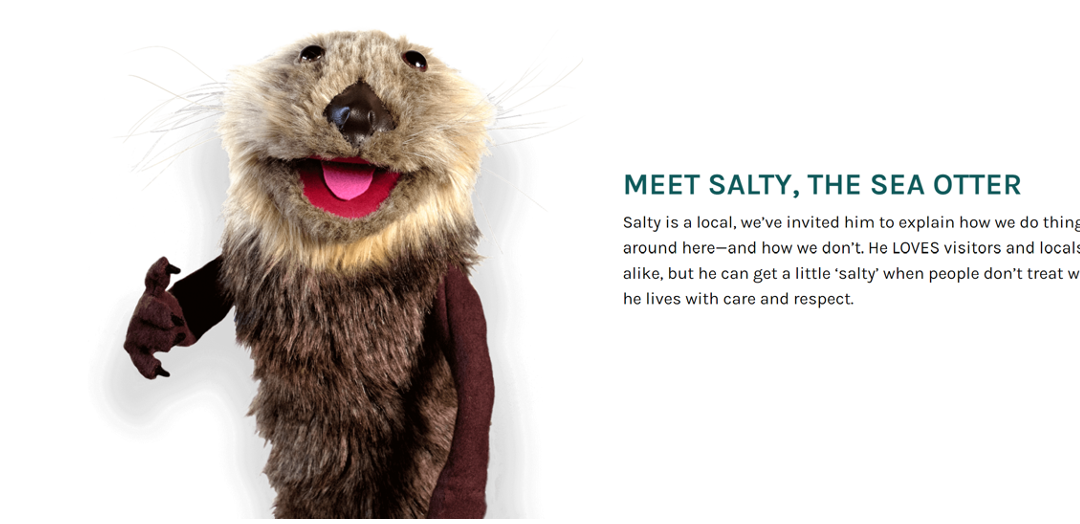Having spent most of my youth and adult years living in tourism communities, I must admit that I’ve grown up a little more immune to the comings and goings of visitors of all types. Sure, there have been times when I’ve lost my S#$%^ because of the busyness of some of my favourite spots or the disrespectful behaviour of those who don’t treasure the area as much as I do, but I’ve also been enthralled by the people I’ve met who share common values and interests. My experience with the benefits and frustrations of tourism is often echoed in my work where resident tourism surveys and focus groups highlight these “two-sides of the tourism coin.” Fortunately, more and more of the communities we work with are trying to figure out how to maintain all that is good about tourism while trying to limit the more challenging aspects, whatever they may be.
Prior to the start of the COVID-19 pandemic, tourism communities across BC were experiencing an influx of visitation like they had never seen before. The industry was at a peak and strains on local infrastructure and locals’ patience were beginning to show. As Destination BC (DBC) rolled out regional planning initiatives across the province, a common theme began to emerge about the need for visitor management and stewardship. These themes emerged from a good place, mostly due to a desire to enhance the experience for both visitors and residents in tourism communities. It became apparent in some communities that there was a need to direct visitors around a bit and support their needs a little more and, in some cases, better target visitors who were more aligned with the community’s values. These efforts, however, were disrupted by COVID. When COVID-19 travel restrictions eventually and sporadically lifted, BC residents erupted across their regions and the province out of convenience and necessity rather than a yearning to visit a particular destination. Some communities were overwhelmed with the sheer number of visitors, some of whom were disrespectful to the communities they were visiting, coupled with a thinning out of their local tourism labour force. During this time, the need for management and stewardship took on an even greater importance. As we began to emerge from the stricter COVID restrictions, regional destination marketing organizations (DMO) and local DMOs started to release their invitation for visitors to deepen their relationship to the place and to treat it as their home. Creating a sense of yearning to visit an area was the first step in helping would-be visitors develop a real sense of appreciation and respectful behaviour.
Prior to COVID and continuing even now, tourism communities are taking on projects to help manage visitors. Efforts include investing in visitor infrastructure such as beach showers and waste stations, as well as programs, such as bus shuttling, to help enhance the experience for visitors and to help them “act right” in the communities they visit. In some cases, the sheer number of visitors and entrenched behaviour needs a little more help “to act right,” so regulations with education are utilized. DMOs are limiting peak season advertising and, instead, inviting guests to come in the quieter times. Some communities are also questioning how additional tourism accommodation might impact already busy infrastructure. At a provincial level, DBC is enacting the iconic strategy to disperse visitors to lesser known destinations during peak times like summer, and directing visitation in the slower season to well-known destinations that have the infrastructure and experiences at this time. Whistler, BC, is taking the concept of “carrying capacity” planning further, and has developed a “balance model” to help understand the dynamics of tourism and population growth on attributes important to the community.
Where visitor management addresses the coarse movements and behaviour of visitors, targeted visitor stewardship communication campaigns are meant to support the finer details of how visitors should treat areas with respect. But it isn’t easy…. The number of messages and videos hitting people every day on social media creates a tonne of noise, and breaking through that requires a multifaceted approach of catchy pre-trip and onsite communications. On this front, the campaign I’m most excited about these days involves Tourism Ucluelet’s use of a mascot otter named “Salty” (so apropos for Ucluelet) to get the message across online, and eventually I’m told, in person…er costume. In Tourism Ucluelet’s own words, “Salty is a local, we’ve invited him to explain how we do things around here—and how we don’t. He LOVES visitors and locals alike, but he can get a little ‘salty’ when people don’t treat where he lives with care and respect.” You can check out some of his short snappy and salty video messaging on Instagram .
It is too early to tell if all of these efforts will enhance the benefit side of the tourism coin, but, as someone working on-the-ground and in a planning capacity with tourism communities, it sure is encouraging to see visitor attraction dollars and industry sentiment shifting to enhanced tourism community development and management efforts like this work in Fernie. This shift is needed and will help the industry and communities that depend on it to continue to genuinely embrace those who visit.
If you are interested in receiving support with tourism planning or visitor management planning reach out to dwilson@whistlercentre.ca
Great Examples of Campaigns with Responsible Travel Messaging
Invitations
Every Year (TOTA) https://www.youtube.com/watch?v=akb0knDYI6k&t=5s
Tread Lightly (TVI) https://www.youtube.com/watch?v=9KYFQgXdFhE&t=4s
Infrastructure and programs
Shuttle bus to parks: https://www.whistler.ca/events/free-rainbow-park-shuttle
Parking and staging: https://tofino.ca/our-community/parks-natural-spaces/beaches/
Regulations
Beach fires: https://tofino.ca/our-community/parks-natural-spaces/#beach-responsibly
Rezoning: https://www.westerlynews.ca/news/ucluelet-votes-on-three-major-developments/
Responsible travel campaigns
Kootenay Rockies: https://www.kootenayrockies.com/responsible-travel/
Tourism Ucluelet: Salty https://www.instagram.com/stories/highlights/17965683268645851/?hl=en
Full package
Fernie: https://www.thefreepress.ca/news/rdek-allocates-800000-to-sustainable-tourism-in-elk-valley/

